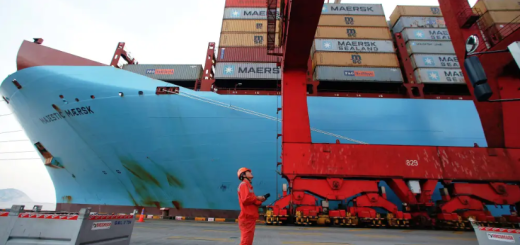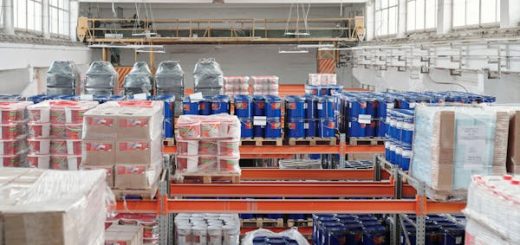Early Bird Advantage: Secure Christmas 2025 Inventory with China Consolidation to EU
For European and North American businesses sourcing goods from China, the 2025 holiday season presents a critical opportunity to leverage early bird deals in China consolidation. With supply chain disruptions, tariff changes, and peak-season logistics pressures looming, proactive planning is essential to ensure timely delivery, cost savings, and compliance. This guide unpacks the strategies, tools, and trends shaping China-EU/North America logistics for Christmas 2025, empowering businesses to optimize inventory while mitigating risks.
Why Early Planning Matters for Christmas 2025
The 2024 holiday season saw unprecedented supply chain chaos, including port strikes in North America and EU customs delays due to documentation errors . For 2025, these challenges are compounded by:
- Tariff Volatility: The EU’s 2025 customs tariff updates include new HS codes for tech and agricultural products, while the U.S. has imposed 104% tariffs on Chinese plastic Christmas trees .
- Logistics Bottlenecks: Sea freight rates from China to Europe surged to $3,710 per FEU in mid-2025, with rail and air freight facing capacity constraints .
- Consumer Demand Shifts: 69% of UK shoppers start Christmas purchases by August, pushing retailers to stock shelves earlier .
By securing early bird deals, businesses can:
- Lock in Discounts: Save 10–30% on shipping costs with consolidators offering pre-peak pricing .
- Avoid Delays: Secure warehouse slots and priority customs clearance.
- Optimize Cash Flow: Spread costs over months using deferred payment options.
Key Challenges in China-EU/North America Christmas Logistics
1. Tariff and Compliance Complexity
- EU VAT and Tariffs: The EU’s 2025 reforms eliminate the €150 duty-free threshold, requiring VAT (19–27%) and tariffs (5–12%) on all imports . For example, a €200 smartwatch now incurs €38 VAT + €24 tariff, totaling €62 in fees .
- U.S. Section 301 Tariffs: Products like electronics and textiles face 25% additional duties, with plastic Christmas trees hit by 104% tariffs .
- Documentation Requirements: EU EORI numbers, CE/FDA certifications, and COs (Certificates of Origin) are mandatory. A German retailer lost €5,000 in fines for missing EUTR timber legality documents .
2. Logistics Cost Pressures
- Sea Freight: A 20ft container of 200 Christmas chairs from China to Rotterdam costs $1,500 via sea (12–15 days) vs. $3,000 via air (3–5 days) .
- Rail Advantages: The China-Europe Railway Express offers 12–22 day transit at mid-range costs, ideal for bulky items like decorations .
3. Supplier and Inventory Management
- Multi-Supplier Coordination: Fragmented orders from Chinese factories lead to mismatched invoices and delays. A Dutch wholesaler spent 15 hours/month reconciling 10+ supplier invoices .
- Stockouts and Overstocking: Over 30% of EU retailers experienced stockouts during 2024’s peak season due to delayed shipments .
Strategies for Hassle-Free China Consolidation
1. Leverage Early Bird Shipping Deals
- Hybrid Models: Combine air freight for high-value items (e.g., electronics) and sea freight for bulk goods (e.g., decorations) to balance speed and cost. A Dubai esports tournament saved $12,000 by using air consolidation for 500 gaming mice .
- Consolidator Discounts: Leading providers like Cainiao and DB Schenker offer 10–15% off for bookings made by Q3 2025. For example, a 100-unit order of LED string lights could save $800 on sea freight .
2. Optimize Customs Compliance
- HS Code Accuracy: Use AI tools like Zonos to auto-classify products (e.g., “LED Christmas lights” under 8539.50) and avoid tariff errors. A Spanish retailer overpaid €2,000 in duties due to misclassifying “smart ornaments” as “toys” .
- Certificate Management: Track expiration dates for CE, REACH, and FDA certifications. A French cosmetics brand avoided a 4-week delay by using a consolidator’s pre-shipment checklist .
3. Centralize Supplier Coordination
- Consolidator Onboarding: Partner with providers that act as a single point of contact for suppliers. A Portuguese wine importer reduced document collection time by 70% using this method .
- Digital Dashboards: Platforms like 17Track centralize tracking, invoices, and certificates. A U.S. home decor brand cut administrative workload by 40% with cloud-based tools .
4. Mitigate Risks with Technology
- AI-Powered Logistics: Use machine learning to predict demand spikes and optimize inventory. For example, a UK retailer used AI to forecast 20% higher sales for eco-friendly Christmas trees, avoiding stockouts .
- Blockchain Tracking: Track shipments from factory to EU/NA warehouses in real time. MSC’s Remote Container Management system reduced delays by 30% in 2024 .
Step-by-Step Planning Timeline for Christmas 2025
Q2 2025: Supplier Sourcing & Contracting
- Identify Suppliers: Use Alibaba and 1688 to source Christmas decorations, toys, and electronics. Verify certifications (e.g., FSC for wooden items) .
- Negotiate Terms: Secure 10–15% discounts for bulk orders and 30-day payment terms. A Belgian wholesaler saved €10,000 on 500 nativity sets by locking in Q2 pricing .
Q3 2025: Order Placement & Logistics Booking
- Consolidator Selection: Choose a provider with EU/NA expertise (e.g., Xenon Logistics for esports gear). Request a free damage assessment for fragile items .
- Documentation Submission: Submit commercial invoices, COs, and certifications to the consolidator by August 2025. A German retailer avoided a €5,000 fine by using a consolidator’s translation service for Chinese documents .
Q4 2025: Shipment Execution & Monitoring
- Customs Clearance: Use the EU’s Customs Information System (CIS) or U.S. ACE Portal for electronic submissions. A French wine merchant cut clearance time by 50% via CIS .
- Last-Mile Delivery: Opt for white-glove services for bulky items (e.g., Christmas trees). A Swiss retailer used this service to assemble 300 trees in 4 hours for a holiday market .
Case Study: How a Dutch Retailer Slashed Costs by 35%
Challenge: A Dutch Christmas store faced rising tariffs and delayed shipments from China.
Solution:
- Partnered with a consolidator offering 15% off for Q3 bookings.
- Used AI to auto-classify 2,000 SKUs (e.g., “inflatable Santas” under 9505.10).
- Leveraged EU’s VAT deferral scheme to free up €20,000 in cash flow.
Results:
- 35% lower shipping costs.
- Zero customs delays during peak season.
- 25% higher profit margin on holiday sales.


